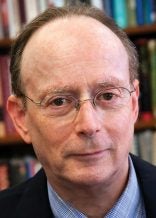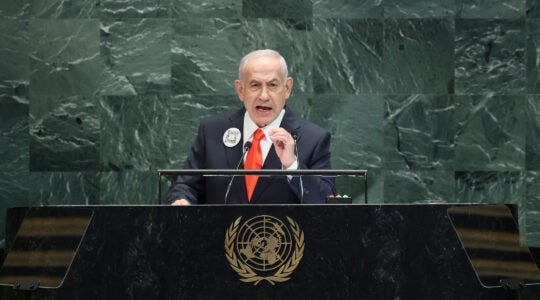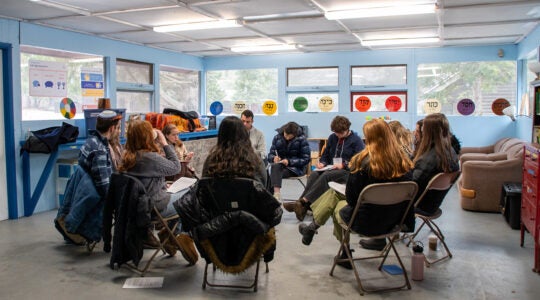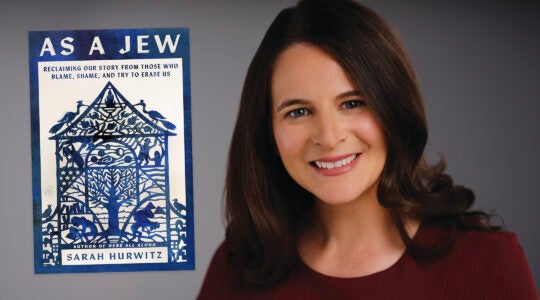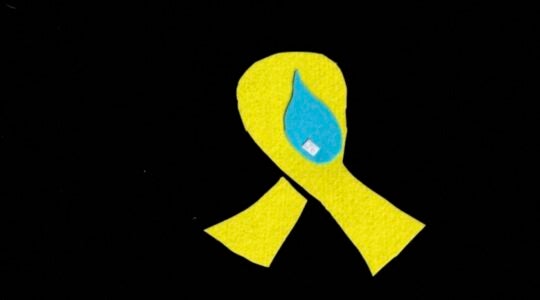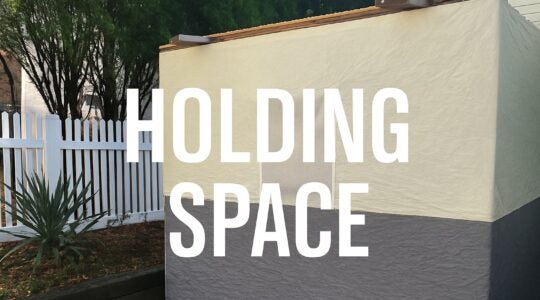At his bar mitzvah in 1926, in his hometown of Gloversville, N.Y., little Jesse Zel Lurie (known to family and friends as Zel), climbed onto a chair and began his speech: “I pledge to continue the work of my parents for Palestine in Palestine,” he said, stressing the last two words. When those gathered broke out in applause, the youngster decided to quit while he was ahead.
One of the guests later told him it was the shortest and best bar mitzvah speech he ever heard.
In a sense, though, that brief pledge launched the extraordinarily long, accomplished and word-filled public career of one of the most notable and colorful Jewish journalists of the last century. It was a career that included Zel Lurie writing for and editing the Palestine Post (now the Jerusalem Post), where his older brother, Ted, was editor in chief, and serving as editor of Hadassah Magazine for 33 years.
After he retired to Delray Beach, Fla., in the early 1980s, he remained active in his efforts to promote reconciliation between Arabs and Jews, and wrote a bimonthly column on Israel and Jewish affairs until shortly before his death on the eve of Passover.
He was 103.
I met Zel Lurie in 1975 on an American Jewish journalist mission to Israel. It was my first visit to the country, and we were roommates for part of the trip. He was diminutive in size, with a high-pitched voice, but he spoke with authority and was treated with deference by the steady stream of writers, photographers and illustrators who met with him at our hotel in Jerusalem as he planned future issues of Hadassah Magazine.
Wherever our group went, the dignitaries we encountered, from Mayor Teddy Kollek to IDF officers, treated him with warmth and respect.
Zel took a kind of paternal interest in me and my career, and we stayed in touch periodically over the years. Though we disagreed at times on issues, mostly related to Israel — as a peace activist he later worked with Peace Now and Meretz — we shared a love of and commitment to American Jewish journalism, and he welcomed efforts to professionalize the field through enterprise and investigative journalism.
Zel’s intense relationship with the Jewish homeland began in 1928 when he made good on his bar mitzvah pledge, two years prior. He left his family and traveled alone by ship for 28 days to Haifa, where he enrolled as a sophomore at a pre-engineer high school.
He returned to the U.S. as a high school senior and attended Cornell University. But he didn’t graduate because two older brothers sent him back to Palestine in 1934 in an effort to break up his budding romance with Irene “Jupie” Blayzor, a Syracuse University student and lapsed Catholic he had met the year before.
From 1934 to 1937, Zel reported from Jerusalem for the Palestine Post, covering the Arab revolt, and he headed the Tel Aviv bureau. He returned to the U.S. in 1937, and Jupie was waiting for him at the dock. They married a year later. The marriage, which lasted 50 years, until Jupie’s death in 1988, produced two children and four grandchildren who identify Jewishly, causing Zel to consider intermarriage good for the Jews.
For more than 25 years following Zel’s return to the U.S. he held several jobs, from foreign correspondent for the Palestine Post (until 1967), to public relations at the United Palestine Appeal (later the United Jewish Appeal) and Jewish Welfare Board. It was at JWB that he wrote a piece about the four chaplains — Methodist, Catholic, Dutch Reformed and Jewish — who gave their life jackets to crew members when the Dorchester, an army transport ship, was torpedoed by a Nazi submarine and sunk within 20 minutes in 1943. The iconic story was later marked by a book, film, and U.S. postage stamp.
After the war, Zel covered the new United Nations for the Palestine Post on the events leading to the creation of the Jewish state. In 1947, he became the first executive director of the American Friends of the Hagana, a collection of military groups which later became the core of the IDF. Later that year he was hired to spruce up Hadassah’s eight-page newsletter, which led to his becoming the first professional editor of the magazine for the next 33 years, and publisher from 1980 to 1983.
Under his guidance, Hadassah Magazine became a leading force, not only as the largest American Jewish publication, with several hundred thousand subscribers, but in telling Israel’s emerging story to an increasingly Zionist community. During that time Zel was a mentor to a number of writers, exposing a wide swath of American Jewry to the work of Elie Wiesel, A.B. Yehoshua and Gloria Goldreich, among others.
In the last three decades Zel was active in promoting Arab-Jewish dialogue and cooperative efforts. He was a founder of the American Friends of Neve Shalom/Wahat al-Salam, Israel’s only village where Jews and Arabs choose to live together. He helped build a bilingual school there, and created a journalism award promoting articles that foster a better understanding of the two cultures.
Alan Tigay, who succeeded Zel as executive editor at Hadassah in 1980 (and served for 35 years in the post), told me this week he considered Zel “a pioneer in Jewish journalism as a Zionist,” noting “he was faithful to his vision of Zionism throughout his life — he didn’t just believe. He walked the walk about reconciliation. And I was a beneficiary of his raising American Jewish journalism to higher levels of coverage and quality.”
I last saw Zel two summers ago when I spoke at the Everett Jewish Life Center in upstate Chautauqua, home of the educational and cultural community where he spent many summers. By that time Zel had trouble walking, his eyesight was diminished and he was nearly deaf. But he was as sharp as ever and reminded me of an incident from our 1975 Israel trip that I had long forgotten.
Just before we parted, he told me that he believed he was the oldest working journalist in America.
“When are you going to write about me?” he asked.
I told him I hoped to soon, and I meant it. But somehow I never got around to it.
In speaking with Alan Tigay this week, I told him my regret that only now, after Zel’s death, was I writing a column I should have written two years ago.
His reply: “It’s never too late to visit a monument.”
Gary@jewishweek.org
Much of the biographical information in this column was provided by Zel Lurie’s family, prepared at the time of his 100th birthday in December 2013.
The New York Jewish Week brings you the stories behind the headlines, keeping you connected to Jewish life in New York. Help sustain the reporting you trust by donating today.
